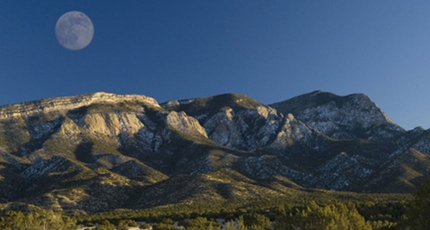In his native language, Houser’s name is a phonic cognate for “Haozous,” the “sound of pulling roots.” In his own quiet way, this Chiricahua Apache started as a painter at the Santa Fe Indian School under the tutelage of Olaf Nordmark and Dorothy Dunne, received a Guggenheim in 1948, and went on to become one of the foremost American sculptors of the Twentieth Century.
Houser’s later choice of sculpture also marks a decisive turning from and, at the very least, subliminal rejection of the simpler and less developed handling of volume and perspective that suited the majority of his colleagues and their patrons. This astounding artistic development, therefore, is not so much an act of rebellion as of transcendence. Houser not only embraced the European tradition of three-dimensional art and made it his own, but also embraced the forms unique to Twentieth Century American modernism, of which he became one of the foremost practitioners.
“Apache Gan Dancers,” an early serigraph in the Modrall Sperling collection, though still in the traditional style of the Indian School, already shows the fascination with volumetric form that would later lead Houser to his medium of choice.



